2009 has all the potential to be great.
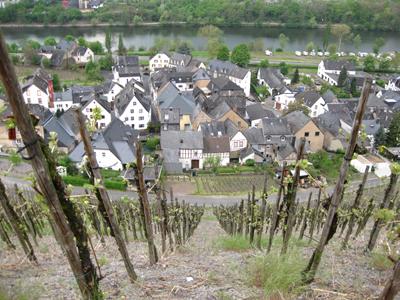 |
Already the critics are tripping over themselves, trying to put 2009 in the proper context, avoiding, as best they can, comparing 2009 with 2007. (It’s embarrassing, after all, to have a vintage of the decade every other year.) My best guess is that the 2009s will come into the market with a bit more calm, a bit more critical introspection. Because of the times, the embarrassment of riches that Germany has had in the last decade, I sense that the 2009s will enjoy fewer grand proclamations, less pomp and circumstance, perhaps little of the mania that welcomed in the 2007s. That said, qualitatively, there may not be that great of a difference; we’ll have to see how these two vintages distinguish themselves over time.
Left: In the Graacher Domprobst, looking down onto the sleepy town of Graach and the Mosel River beyond it.
Mosel
Click here to skip ahead to A.J. Adam
Click here to skip ahead to Reinhold Haart
Click here to skip ahead to Fritz Haag
Click here to skip ahead to Willi Schaefer
Click here to skip ahead to Zilliken
Nahe
Click here to skip ahead to Schäfer-Fröhlich
Click here to skip ahead to Emrich-Schönleber
Click here to skip ahead to Dönnhoff
Click here to skip ahead to Diel
Rheinhessen
Click here to skip ahead to Keller
If in the long run 2007 does prove to be the more substantial vintage, on first impression I have to say I like the young 2009s better than I liked the young 2007s. There’s more electricity, more clarity.
The signature of 2009 is ripe, fresh, fall-off-the-damn-tree-right-into-your-hand fruit. Imagine a small army of people prepping for the photo shoot: A green apple, a melon, peach and pear placed artfully on a pedestal, buffed down until they all glow radiantly, every blemish polished squeaky clean. The fruit shivers under the mist of ice-cold water that a technician artfully sprays onto it. Perfect.
This is the fruit of 2009: It is gorgeous, pure, transparent, sinewy yet extremely clean. The wines are downright juicy, exhilarating, lip-smacking affairs. There is enormous concentration here, a muscular extract that fills out the wines, giving them a textural density, making them grow bulbous through the mid-palate – yes, this is a ripe vintage. That said, the top wines have more than enough discipline to tame this fruit, vigorous acidities that serve as not-so-gentle reminders of the concept of structure. There is more than enough tension in the best wines to fling slate and minerals all across the palate, to provide for what can be thrilling presentations, great balance. The acidity is much more present in 2009, much more defined (at least in this stage) than it was in 2007.
The easy-to-digest formula you will hear from the winemakers about 2009 is the following:
2007 + 2008 = 2009
In other words: Take the ripeness of 2007 and add a bit of the acidity of 2008 and this gives you 2009. If this a simple read, and it is, there is also some truth here.
The 2009s are cleaner and fresher than the 2005s, they are clearer than the 2007s – perhaps they do not have the depth of material that the 2007s flaunt in their brooding stillness, yet time may very well may write a different narrative.
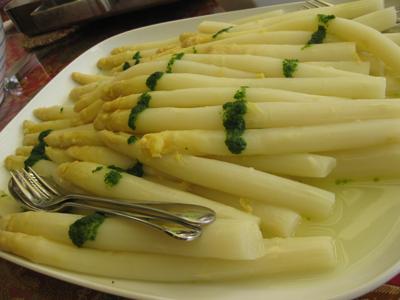 |
The greatest wines of the vintage seem to come from the Northern haunts; many of the Mosel-Saar-Ruwers are extraordinary (my love, the Saar, was especially blessed), the top producers in the Nahe made superb wines as did (of course) Keller in the Rheinhessen. The strength of 2009 is the Spätlesen, which are full, powerful, yet disciplined. There are some psychotic Auslesen, truly riveting wines, so hopefully even though Auslesen go more out of fashion with each passing year, some people will pony up and bury these in the cellar. They won’t disappoint. Finally, the dry wines of 2009 are stunning. And while the Grand Cru dries (Grosses Gewachs) are, well, grand – it's worth noting is the quality of the more basic dries is out of control – we’ll be presenting quite a few this year.
I spent a week traveling through Germany. I visited nearly 20 growers and tasted the collections of nearly 40 more at the Mainzer Weinbörse, from the Franken to the Pfalz and just about everywhere in between including of course the Mosel, Saar, Ruwer, Nahe and Rheinhessen. Many of the estates I’ve had the chance to re-taste again in the U.S. – I’ve indicated these below in my tasting notes.
Above: "Spargel!" Yes, it's hard to drive a kilometer without hitting some Asparagus, called Spargel in Germany, when you're in Germany in the early spring. The white Spargel, aside from looking a bit corpse-like, is sweeter, more aromatic. This specific Spargel was served at lunch with Phillip Wittman on the back porch, overlooking the grounds of the estate with the entire family in tow. I love Germany.
If you’d like to read my comments on the various collections I tasted, scroll down – it should be very easy to find the specific producers you’re interested in. At the moment I have only finished the Nahe section of this report, though expect more, from Keller to Schloss Lieser to Zilliken to Lauer to Wittmann to Fritz Haag etc and so forth.
This is an exciting vintage for myself and the store because as we’ve grown our program and developed real relationships with the growers (I’m proud to call many of them friends), we now get phone calls and emails all through the year when new things come up.
To this affect, we will be presenting a LOT of exclusives in 2009, from Willi Schaefer, A.J. Adam, Schloss Lieser, Reinhold Haart, Fritz Haag, Hanno Zilliken... and more. Stay tuned and please sign up for our email program if you haven’t already; most of these exclusives will be sold only through our email program.
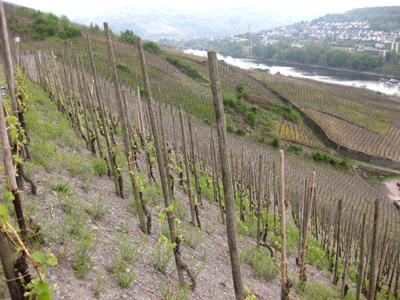 |
Perhaps nothing defines 2009 so much as the beginning and the end.
The Beginning. The flowering in 2009 began in fits and starts. A hard winter with very cold temperatures and lots of snow turned on a dime, taking the landscape from a dull wintry gray/white to a warm, blazing green very quickly. A common refrain was winter went directly into summer, as if spring had been swallowed whole. So the flowering began, all crazed and juiced up. And then, of course, came another cold spell which halted the flowering mid-party and caused a hell of a lot of confusion and a very uneven flowering, at times up to 2 weeks or more. The end result is uneven bunches – millerandage is the French term, the Germans say Verrieseln . I think we say “shot berries” but honestly I don’t know exactly what we say. (For you fellow Spätburgunder fanatics, this affected the Pinot Noir even more than the Riesling, so look for the 2009 Pinots to be simply superb, and stupid-rare.)
Above right: Another shot taken in the Graacher Domprobst. I don't know why I took so many shots in this vineyard.
If this millerandage all sounds a bit sinister, it is – but more for yields, less for quality. In fact, the grapes produced from millerandage tend to be smaller, denser, and this can lead to really outstanding concentrations, which is no doubt a theme for the 2009ers.
As Terry Theise says: “There’s sometimes a lot of flavor in those un-sexed grapes.”
The End. The summer proved to be somewhere between fine and fair enough, the sort of verbiage used to convey something so unexceptional that you’re all but intended to forget it immediately. Some reported it being cool, others said it was warm – reason enough to disbelieve the easy vintage read. Everyone said the spring and summer were filled with rain, good rain, and so the vines were well nourished. But the fall, the fall… this is where the magic of 2009 really lies because after an uneven flowering, and plenty of rain, what was needed was a perfect, cool, dry fall.
What Germany got was a perfect, cool, dry fall.
At many estates, the harvest lasted a month or longer, with the weather allowing the estates to make one, two, three and in many cases more passes through the vineyards. While the summer gave the vintners plenty to do, the rains nourishing the vines but also propagating Oidium and peronospora, the harvest could be carried out calmly, could be dialed in at the exact moment, could be as patient and exacting as the winemakers wanted it to be. (And there are many patient and exacting vintners in Germany.)
An exceptional vintage for the Mosel. You can basically start and finish there.
I think Schloss Lieser made their best collection yet, god bless Thomas Haag. Adam’s wines continue to haunt me; Willi Schaefer has put together another vintage of detailed masterpieces. The Saar is perhaps the highlight of 2009, the colder evenings and slightly more angular acidities providing such a profound perk to the ripeness of 2009. Zilliken’s collection is exceptional… we’ll have a few surprises coming down the line from the Saar, so stay tuned.
Second, things are getting a bit drier in the Mosel. Not that they haven’t been making large quantities of dry Rieslings for a long time, they have, but they’ve been getting much, much better AND more and more are coming to the U.S. For 2009 we have the first “Grosses Gewächs” from Hanno Zilliken, Willi Schaefer, Schloss Lieser… and probably more but I can’t think of others right now.
All in all, great stuff for the Mosel-Saar-Ruwer in 2009, dry to sweet and beyond...
 |
It’s something of a Cinderella story really: A young, unknown winemaker with a defunct family estate, beginning in 2000 with one single hectare of an obscure and essentially unknown vineyard.
Yet in less than ten years Adam has become one of the most sought-out growers in the Mosel; he has single-handedly put the Dhroner Hofberg back onto the map.
Unknown to celebrity in less than a decade.
A quick geography lesson because if you take German Riesling seriously, you should know about Adam and the village of Dhron. Dhron rests a bit inland from the Mosel, about a five-minute drive upstream from the village of Piesport (this is the heart of the Middle Mosel). The town, however, does not sit on the banks of the Mosel – it is tucked away, rather unremarkably, in a side valley. The Hofberg, however, is a beautiful vineyard, subtle, charming as it curves back behind the town, further and further away from the village and the Mosel. There’s a small brook that runs northwest into the Mosel and the Hofberg winds and undulates with the stream, offering numerous expositions, lots of little nooks and crannies in which to get lost. The soils here are complex, weathered slate with veins of clay.
 |
The 2009 collection at Adam is brilliant, again one of my favorites from the Mosel, as was the case in 2007 and 2008. The 2009ers are forceful, in-your-face, heartbreaking wines of staggering genius. They have everything: class, purity, power, elegance, minerality, balance... While the wines have nuance, they are also obvious wines, weighty and exotic. While they have subtlety, they are not subtle. While they have detail, they are not about this detail per se – they are more about a grand, overwhelming presentation of everything, all at once. They are dizzying, show-stealing wines, their own über-proportioned magnificence almost overwhelming all the detail, subtly and nuance they do have.
In 2009, Adam has added another “Grand Cru” dry to his portfolio, sourced from an old, partially terraced parcel in the Piesporter Goldtröpchen, with vines dating back to 1944. This wine, along with the Hofberg “GG,” are among the best dry Rieslings I tasted from the Mosel.
This is a do-not-miss collection.
2009 AJ Adam Piesporter Goldtröpchen “GG”
This one of the most compelling dry Rieslings I had while in Germany. This is incredibly floral, tulip stalks, stamens and all things flower-related. What is so impressive about this wine is the size, the girth of the wine – we’re talking broad, broad shoulders – with incredible detail, nuances of slate, soil, fruit. This is the contradiction of Adam that is so compelling: Power and force with incredible intricacy.
2009 AJ Adam Dhroner Hofberg “GG”
The 2009 Hofburg is the riper, more aromatic and expressive of Adam’s two dries – at least it was at this visit. While there is a complex fruit profile, that Riesling expression that goes from peach and apricot into tangelo, kiwi, mango, even pineapple, the thrilling element here is the nuance of soil, slate of course, but also just plain old glorious dirt, earth, whatever you want to call it. The palate is incredibly juicy, textured even with a pulling acidity.
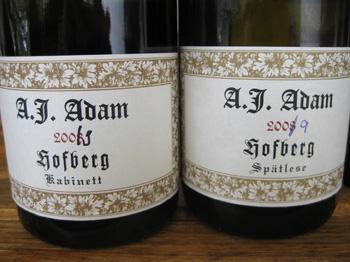 |
2009 AJ Adam Dhroner Hofberg Kabinett
The 2009 Adam Kabinett is once again one of the best of the vintage – albeit in the more muscular, powerful, thrilling genre of the Kabinett. This is not a dainty, easy go lucky Kabinett; it is a monstrous, in your face animal, dense, juicy and evocative. It has that Riesling pear-peach-and-apricot combo which provides a foundation for a wilder array of juicy mango and kiwi. These are ripe, exotic fruits that are still fresh, and made even fresher by a minerality of the most saline variety, slate that has endured multiple wash cycles with rainwater and flowers. Tense and dense, forceful, with extraordinary cut. Superb. Stock up on this.
2009 AJ Adam Dhroner Hofberg Spätlese
This is just a step up in everything: density, weight, force, intensity. This doesn’t make it better or worse, just bigger… though it also feels “clearer,” which makes this bottle, when it's on, absolutely mind-twisting. Extraordinary definition.
2009 AJ Adam Dhroner Hofberg Auslese
Another extraordinary Auslese from Adam, absolutely crystal clear, with the same exotic peach, pear, kiwi, mango display shown in the Spätlese. This wine has such ripeness, such extract on the palate, yet such tension as well.
In general, I do not like the Goldtröpchen, pictured below.

It is a legendary vineyard, an awe-inspiring site that looms large above the quaint, church-steepled village of Piesport. The picture above gives you some sense of this grandiosity, the church steeple in fact visible center-right. When you first learn about German wines, the name “Goldtröpchen” is eagerly translated (it means “little drops of Gold”), along with the likes of “Sonnenuhr,” “Himmelreich,” etc. These are offered out to the newbie as small indicators of how charming, how poetic the language and wines of Germany can be! Along with sites such as the Bernkasteler Doctor, the Urzig Würzgarten, the Goldtröpchen is a site that helped build the fame and renown of Mosel Riesling. Its perfect exposition could bring grapes to ripeness while lesser sites were still bitter and green.
In this new age of warmer vintages, however, this is less and less a benefit and more and more a liability. At this point, many Doctors, many Würzgartens, many Goldtröpchens are just too big for me – to much muscle and weight, not enough acidity, not enough balance. These can be Baroque wines that are gooey and sticky and too decadent for their own good.
Which is why it’s sort of incredible what Theo and Johannes Haart accomplish in the Goldtröpchen. They make delicate wines. They make Goldtröpchens that are dusted with lime zest and salt; Goldtröpchens that are floral and fresh. While “rustic” isn’t exactly the right word, the Haart wines are not about elegance, rather they are charming, textured (they must bottle with a good amount of CO2 that creates an über-delicate, almost imperceptible fizz); they are often very light, airy even. While the acidities can be prominent and the wines are nearly always impeccably balanced, they are not clearly delineated. These are not about focus so much as they are about detail, about a thousand grains of Riesling-sand being thrown into the crystal blue sky, causing an effect that is dazzling and spellbinding precisely because it’s impossible to capture fully.
In short, this estate deserves more attention in the U.S. and I’m glad that Bruce Sanderson at the Wine Spectator is out there giving these wines big scores (even though, philosophically, I think scores are ludicrous and insulting). But still, if someone should benefit from high scores, it might as well be Theo and Johannes Haart. Right?
2009 Haart “Haart to Heart” Feinherb
I’m not going to review this wine. It’s actually a decent bottle of Riesling, but I really just wanted to say I loathe the name of this wine. It’s clever and playful, yet inappropriately sentimental and schlocky and belittles what is actually a decent wine. Just because you can make snappy word-plays with your last name doesn’t mean you should.
2009 Haart Piesporter Grafenberg Kabinett
This is a juicy, amped up bottle of Riesling. The red-slate soils give the wine some serious spice, though the palate is juicy as all get out with red fruit, citrus, melon and apple. Interestingly, this is one of the richer Haart wines, yet it also has a pungent, lemon-pith acidity that is almost grippy. Uncouth but exciting. This is a terraced vineyard that Theo Haart has spent some time rebuilding and it’s been replanted with low-yielding vines. Tons of potential here and a very geeky bottle of German Riesling.
2009 Haart Piesporter Goldtröpchen Kabinett
Another juicy, deep bottle of wine; in general the 2009 Haarts seem to have a powerful dosage of fruit, a mid-palate crammed full of citrus, apple and pear, in various assortments. The fruit is pure and textured, balanced well by the acidity.
2009 Haart Piesporter Goldtröpchen Spätlese
This is a great Spätlese, high-toned and clear as the can be. A great expression of slate, even a bit saline on the nose though the palate is all Spätlese, ripe, juicy and sweet.
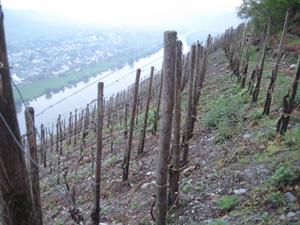 |
I did not visit Fritz Haag this year; I had to pare back my trip a bit and I figured I could taste the wines at the Mainzer Weinbörse and I’d have the chance to taste them again in the U.S. – Fritz Haag is, after all, one of the Middle Mosel’s greatest and if there’s one estate an importer likes to highlight, this is usually on the short list.
In general the collection is impressive, very good to great. At the Mainzer Weinbörse they didn’t seem to have that uncanny perfection that always makes them so… er, perfect? They felt dense, immaculate and glossy, very fine. But not thrilling. Especially compared to the absolutely riveting wines from Schloss Lieser.
Then I tasted again in New York about a month later… beautiful.
So there you go.
2009 Fritz Haag Brauneberger Kabinett
You couldn’t get more Middle Mosel, more 2009. Juicy and ripe, for sure rounder and more elegant than say, Schloss Lieser. Exceedingly dense with green citrus, a fine display of slate and great balance. Very fine. (Above right: In the steep Juffer vineyard, high above the town of Brauneberg, visible on the left side of the Mosel.)
2009 Fritz Haag Brauneberger Juffer-Sonnenuhr Spätlese
Deep and clear – incredible concentration. While I should probably like the Kabinett better, the Spätlese is on just perfect form today and completely compelling. This is bulbous, I mean the mid-palate is ripe with fruit, curvaceous with green apple, pears and lime zest, but there is plenty of slate and flowers to convey freshness, movement, energy. Beautiful juice.
Sometimes – it can be in the middle of anything, paying taxes, taking out the trash, re-alphabetizing the books on the book shelf – I realize that I haven’t drunk a Willi Schaefer Riesling in a few weeks. I then wonder what the hell I’ve been doing with myself, how could I have missed out and NOT indulged in one of the finest, quietest, most delicate and precious pleasures around?
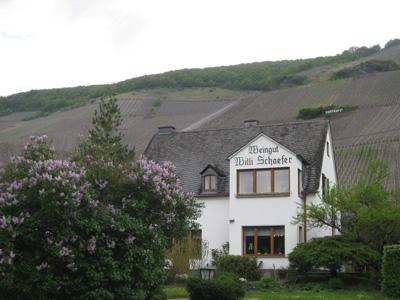 |
How did I let myself go four days, a week, two weeks, without having at least one Schaefer Riesling? Seriously – you didn’t even have time for a Kabinett? You didn’t have time to read a line or two of Walt Wittmann because Lost was about to come on? Seriously??? Didn’t my mother raise me to love myself better than that? (Yes, by the way, she did. Thank you mom.)
Life is too short not to indulge in these ethereal, absolutely beautiful Mosel Rieslings and in all sincerity I feel at least a bit of shame that I’m not able to open one a day, just for a sip, just to check in on the tiny narratives of these gossamer wines. The more I drink Schaefer Rieslings, the more I realize, almost unconsciously, on a very deep level, how profound they are, on their own, diminutive, quiet, humble scale.
In 2005, 2006, 2007, 2008 and now in 2009 - Willi and Christoph Schaefer have, in my opinion, made some of the finest “traditional” (Kabinett, Spätlese, Auslese) Riesling in the Mosel. Yet this year, there is exciting news - the first ever Willi Schaefer Grosses Gewachs, a Grand Cru dry Riesling. We will have the U.S.'s total allocation (thank you Christoph and Willi). The bottle shot below is of the Himmelreich GG, not yet labeled or released... Stay tuned.
 |
2009 Willi Schaefer Graacher Himmelreich Kabinett
If there is a factor that makes some 2009s greater than others, it’s the clear prominence of the acidity, the proper balance to the juicy ripeness of the vintage – and in 2009 Willi Schaefer, once again, nailed it. The Graacher Himmelreich was harvested in the last weeks of October and shows lovely fine layers of citrus, clean and delineated with dashes of the more exotic: mango, tangelo, that sort of thing. The Himmelreich’s fine minerality, that needle of salt and stone, is present throughout the wine as is the delicate flip of acidity that provides for a clear frame, an energized structure. Very good.
2009 Willi Schaefer Graacher Domprobst Kabinett
The Domprobst is the bigger of the two Kabinetts, denser, darker, riper – a more fascinating play of both dark citrus and a more pungent, intense minerality, slate washed with salt and iron. Though this was harvested at about the same time as the Himmelreich Kabinett, there is both a bit more sugar (50 grams residual sugar as compared to 48 for the Himmelreich) and a bit more acidity (8.3 grams as compared to 7.8 for the Himmelreich). If this is a bit more muscular, it’s also perhaps more elegant, which is sort of hard to wrap your brain around – but so it goes at Familie Willi Schaefer. An awesome Kabinett.
2009 Willi Schaefer Wehlener Sonnenuhr Spätlese
No Kabinett from the Wehlener Sonnenuhr in 2009, only a Spätlese. And it’s lovely. I’m always fascinated by the Schaefer Sonnenuhr, and not just because it’s a kooky rarity; it’s a wine that is always sleek and elegant, not exactly diminutive, but rather something sizeable pulled very long, stretched out to the point that it can’t help but be ultra-elegant. I think the 2009 Wehlener Spätlese is damn, damn fine – if you can find this bottle, buy it. It has a curious blue-fruit quality, blue berry and vanilla bean adding intrigue to the more typical peach and apricot notes. A fine, polished line of slate runs through the good length of the wine, which is airy, gossamer and light though it also has beautiful focus, nearly perfect balance. This is so, for lack of a better descriptor, “Willi Schaefer.” Perfect in a subtle, beautiful, way. I like this wine a lot.
2009 Willi Schaefer Graacher Himmelreich Spätlese
This was showing a bit awkwardly at my tasting; it was bright and fresh as all get out, yet tinged a bit by a bitter herbal, citrus quality. I think it was just shut down. I assume it’ll be good to great – somewhere in between there, but I couldn’t make a fair evaluation here.
2009 Willi Schaefer Graacher Domprobst Spätlese #10
This was also closed down, fierce-like. Still, it was impossible not to miss the extreme, almost burly tension this wine has, and when it opens up it will be great.
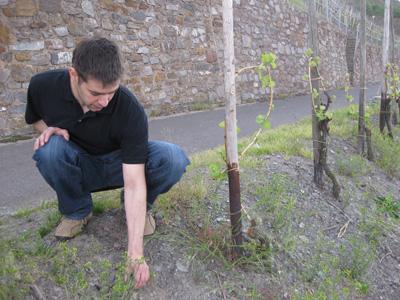 |
2009 Willi Schaefer Graacher Domprobst Spätlese #5
Interestingly, this was showing the most open – I don’t think this really means much for the quality of this wine vis-à-vis the others. More a random matter of wines having their own good days and bad days, so don’t read too much into any of this. This is another Domprobst (like the Kabinett) that shows off a shocking amount of salty slate. This is also another tough damn burly wine, a clenched up fist of a Domprobst with pungent apple skins, orange skins and even a bit of lime zest. With all this mention of fruit skin flavors, you’d have to assume the wine has pretty serious extract, a tactile, textured quality that is riveting, especially married to the defined tendon of fresh acidity, the sharp and polished minerality. Ripe, ripe acids punch down on the backend – if this is one of the most masculine Willi Schaefers I’ve ever had, it’s also has the potential to be one of the best. Awesome.
2009 Willi Schaefer Graacher Domprobst Spätlese #4 (Auction)
I didn’t taste this – as last year, they held back the auction juice from me. I should start a blog on German wines and then maybe I’d get to taste the good stuff. Pictured above is Christoph Schaefer, talking about something dirt-related in an old-vine parcel of the Domprobst. Doesn't he look like a really nice, kind young man? He is... which is what makes it so confusing that I *never* get to taste the Auction bottling. Someone remind me to ask Christoph next year to pour me the Auction Spätlese, or to at least inquire as to why I am always neglected. If it's something I've done, I will make amends.
2009 Willi Schaefer Graacher Domprobst Auslese #11
In 2009 you’ll find two Domprobst Auslesen plus one for the Auction (or perhaps just a Gold Kapsul?) which I did not taste because apparently Christoph Schaefer hates me. Nonetheless, this is a fine wine, harvested in the first two days of November. There is certainly some “sponti” on the nose (a wild sort of earthy quality due to the natural yeast fermentation) and the palate has a lot of muscle and push, lots of ripe green apple and citrus, a bit of that darker slate and mineral, a beautiful honeyed sweetness and a bounty of sweet wild flowers. Again, this is a muscular wine, a rather brutal Auslese (in the context of Willi Schaefer) with plenty of class though. Very good
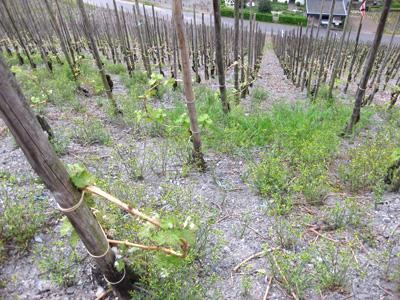 |
2009 Willi Schaefer Graacher Himmelreich Auslese
This is the sole Auslese from the Himmelreich Vineyard and when I was there, it was blazing. Wow. A super expression of ripe, yet taut fruit: Mango, apricot, peach, orange, lime zest, a super-polished expression that slides across the palate with a near-illicit (if not downright X-rated) sex appeal. This is so stylish, the slate is sexy for god’s sake, beautiful length, a lovely clean dash of botrytis offers a beautiful edging of honey and flowers. Now, take this all with a grain of salt because this wine was obviously showing well while the Domprobst were a bit shut down (which is not unusual), but damn this is an awesome bottle of Auslese.
2009 Willi Schaefer Graacher Domprobst Auslese #15
Only expletives could truly convey the profundity of this wine, holy ****. This is a coiled up monster of an Auslese, powerfully mineral, again, a shocking amount of rock-hard slate for the Domprobst, tremendous depth and concentration – the most tactile, dense and muscular of what is in general a masculine collection here at Willi Schaefer. Still, this is explosive with fresh, juicy fruit, it has tension, it has a structure that is almost grippy, ripe acids that clamp on the palate and don’t let go. Green apples, stone fruits, citrus abound, in such plentiful and well delineated ways that cataloguing them feels perverse and immature. Who cares when it’s this good? Even with 40-50% botrytis, this is clean, super-fine and wonderful. Find this, and then buy it, and then drink it.
I didn’t visit Zilliken, which was probably a mistake – but I only had a week and I wanted to visit some producers I had never met before, scope out some new terrain. So I had to content myself with tasting Zilliken only at the Mainzer Weinbörse (a VDP wine fair in Mainz, Germany) and then once again at the industry tasting in New York in early June.
That said, I did get to the Mainzer Weinbörse early, and it was a beautiful day and nearly everyone seemed to be sunning themselves on the large square outside, so I could leisurely taste through the collection and talk with Hanno at some length.
It’s a great collection at Zilliken; at one point Hanno said the 2009ers reminded him of his 1983ers, which is like Beethoven saying a new little ditty he’s just written reminds him of the 9th symphony he wrote a few years back.
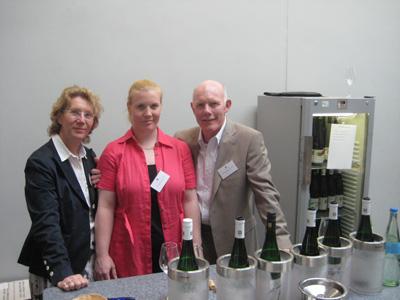 |
Yes, people are already FREAKING OUT about the Zilliken 2009ers; I’ve heard them referred to as perhaps the collection of the vintage. Myself personally, I think it’s a bit early for such weighty proclamations, but who cares really when the wines are this good? One thing is for certain: The cult of Zilliken will grow even stronger in the U.S. after this set of wines, and deservedly so.
A theme here in 2009 is balance; ah yes, balance. Let’s not forget that 2009 is a ripe vintage and there do seem to me to be wines that bend a bit under the weight of their own fruit. At Zilliken, everything is energized, dazzling, all the wines walk around on tip toes, jumping lightly from cloud to cloud. It’s a buoyant collection, a set of wines with really astounding purity of fruit. (It’s worth noting that the Saar in general is perhaps one of the highlights of the 2009 vintage; it’s the one region where you can basically show up at any estate and you’ll be served a collection to reckon with.) To the right: The Familie Zilliken. I took this shot last year at the Mainzer Weinbörse, not this year. This year Hanno had his back to a bright window and the sun would have made the shot terrible. Plus this shot is very sweet.
2009 Zilliken Rausch Kabinett
This is a damn fine Kabinett; one of the best I’ve had from Hanno. In 2009 the Rausch Kabinett clocks in with 73 grams residual sugar countered by 8.5 grams acidity; amazingly the wine tastes just off-dry… maybe even dry given the right context. Several different harvest dates brought in the fruit for this wine and it is lovely, lovely, lovely. So pure and faceted, a ripe base with crisp citrus notes, a dash of green apple, a beautiful salty slate and focused acidity that makes it vibrant, absolutely crystal clear. This is a ripe wine, a big Kabinett, yet there is lots of play, lots of energy on the palate. Superb.
2009 Zilliken Rausch Spätlese
As good as the Kabinett is, the Spätlese (I think) is better; it handles the opulent ripeness of this vintage with more style – the proportions make more sense. This is really a great Spätlese and Hanno knows his Spätlesen. I won’t even go into descriptors – you should have this in your cellar.
2009 Zilliken Rausch Auslese
Super good and clean – even with 50% botrytis. If the strength of this vintage is Spätlese, there are some exceptional Auslesen and this is likely one of them. Very Zilliken. There’s something that makes the Spätlese more extraordinary for me; the energy, the power and delicacy of the wine. But the Auslese is also really a damn good wine. I just wrote two words: “Super, super.”
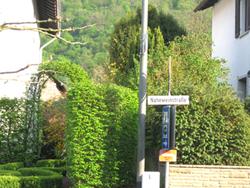 |
A sweet spot for 2009, once again.
The Nahe is very, very exciting. It’s a region that is able to blend the size, the amplitude of Rheingau Riesling with some of the acidity, some of the cut of Mosel Riesling. And this blend is one of the most thrilling experiences to be had in German Riesling at the moment. It doesn’t hurt that the addresses here seem to be among the most broadly competent in Germany: Dönnhoff, Schäfer-Fröhlich, Emrich-Schönleber and Schlossgut Diel differ more in style, in the unique voices of their vineyard, than in quality.
Each and every one of these estates made exciting, exciting wines in 2009.
The big story here has to be the new labels, because the fact that young Tim Fröhlich is making some of the top wines in Germany is no longer particularly shocking news. Traveling through Germany, I try and shoot the shit with the winemakers while I’m tasting, and when I ask who people like, what they’re drinking, what’s exciting… nearly every winemaker mentions Tim.
In general 2009 is another great vintage for Tim. He thinks it’s the best he’s ever made and he’s probably right, though for me his 2008 dry wines were about as good as it gets.
2009 is certainly his most elegant collection to date (or at least the most elegant collection of his that I’ve extensively tasted), still crystal clear and aromatic like the 2008s, yet with more polish, more soothing turns. The idea of “zesting” comes up again and again when I taste Tim’s wines; it’s as if he takes peach, apricot with equal doses of slate, pulverized earth and flowers and zests it all together, in equal parts, into his wines. They have a just ridiculous clarity to them, the wines are saturating, intense, flavorful, yet light.
Riesling-zest.
The GGs are exceedingly stylish – fans of Dönnhoff will probably appreciate the heightened elegance of these wines. They are perhaps a bit less chiseled, a bit less angular (again, a style that I love and makes his 2008 GGs, for me, such incredible wines), but they are still ruthlessly terroir-driven, presenting a floral, mineral detail the likes of which very few achieve.
This is a collection I’ve become more and more excited about each time I’ve tasted it. First in Germany, then in the U.S. at an industry tasting and then again at a dinner with Tim in the U.S. – every single time the wines have been more impressive.
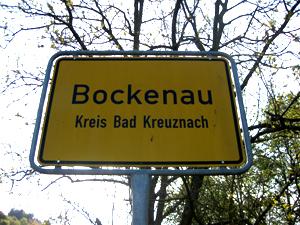 |
2009 Schäfer-Fröhlich Bockenauer Trocken
A killer bottle of village dry Riesling; I had this again with Tim at a dinner in New York at Restaurant Seasonal and I thought it was just off the charts. Fresh, vivid and juicy – great clarity of fruit, green apple, yeasty pear, a chiseled presentation of slate and chalk. This bottle is simple, but the presentation and delivery is perfect, incredibly fresh and light yet gripping.
2009 Schäfer-Fröhlich Felsenberg Trocken
Serious liquid mineral; not as exuberant and juicy as the Bockenauer but more refined, more elegant – needs a decanting. This wine is sleek, stylish, sexy, riddled with green apple and slate, amazing clarity. This is a shockingly serious bottle of dry Riesling.
2009 Schäfer-Fröhlich Felsenberg Grosses Gewächs (GG)
As always, the Felsenberg is one of the most elegant of Tim’s Grand Cru dry Rieslings (though in 2009, shockingly, the Felseneck might take the title). This is seriously graceful wine (Dönnhoff watch out). The bizarre duality of the vintage speaks so clearly here: The wine is big, which is to say ripe, yet it is also super-fine, a fine-ness on the palate that is jarring and somehow makes it feel lean. This is heavy-duty grade lace; satin that you could use as a paper weight. The wine is packed with a wild minerality, slate, salt, dry earth, yeast supported by a ripe lemon pith, thin layers of green apple, pear perfumes and flowers. A really lovely concentration, beautifully proportioned – this would be called balance. Very, very good.
2009 Schäfer-Fröhlich Küpfergrube GG
This is one of the most personality-driven sites in the Nahe: The wines it produces are the dry Riesling equivalent of Woody Allen: A certain, unique profundity combined with a touch (or more) of the bizarre. The grapes in the Küpfergrube always develop a bit later; the site gets less sun and the fruit here develops largely from the sun and warmth reflected off the sheer rock faces that lord over the site’s best parcels (where both Tim and Helmut Dönnhoff have vines). Tim thinks this is the greatest Küpfergrube he’s made. Or, a better way of saying it: This is exactly the wine Tim wants to make from the Küpfergrube. What differentiates it from past wines is the extreme minerality, yet one more element added to what is always the deepest, most saturating of Tim’s Grand Crus. This wine is a character. Dark, sappy fruit, purple apples… Thick, almost a blanketing palate, a heady, sweaty, earthy wild wine. A super freak. Very, very good in 2009. Yes, I know this tasting note is ending the same as the Felsenberg. They’re both very, very good, what can I say?
2009 Schäfer-Fröhlich Halenberg GG
The Halenberg is just a beautiful wine, obviously pretty, with a sweet-flower perfume mixing it up with slate and smoke, though it’s all somehow integrated. The palate continues this prettiness, this purity – lime blossoms, white peach, apricot. This has some of the punch of the Küpfergrube, some of the elegance of the Felsenberg. The slate turns chalky on the long, long finish. Wow.
 |
2009 Schäfer-Fröhlich Felseneck GG
This is the biggest Felseneck I’ve ever had; more guts, more heft on the palate and though it carries its weight with a clarity that is frightening – a screaming, almost painful expression of minerality – it has an atypical swagger. The wine is super, super dense, yet there are more curves here than ever before – the dagger-like edges have been polished and this wine is elegant. It is without a doubt the most complete wine in the collection (and always carries a slightly higher price tag therefore). Beautiful, near-perfect wine though I’d be lying if I said I didn’t like the shards of angry slate the 2008 presented.
2009 Schäfer-Fröhlich Bockenauer Felseneck Kabinett
A great, great Kabinett in the more weighty, denser style. No Dorothy, this really isn’t a Kabinett as intended by the 1971 wine law, but it’s damn good anyway. This was picked at 92 Oechsle in the middle of October and with somewhere around 40-50 grams residual sugar (RS) pushing and pulling against the 8.5 grams acidity. The heightened elegance of the collection shows itself in this wine as well, green apple, pear sizzling across the palate with more Baroque-ness than Tim usually shows. Very good.
2009 Schäfer-Fröhlich Monziger Halenberg Spätlese
Wow this is a great wine; I’ve always wondered why Rudi Wiest doesn’t bring this in. I think it’s superb and in 2009 it might be my favorite – somehow it remains delicate even in spite of the bulky power of the vintage. It is smoky, rich, ultra-ripe yet delineated – fresh mango, ripe guava and kiwi. This wine has just incredible focus and energy, that signature of Schäfer-Fröhlich that I so love. Astounding mineral, length. Awesome.
2009 Schäfer-Fröhlich Bockenauer Felseneck Spätlese
Rich round and powerful, a lot of baby fat and this wine was just opened when I visited Tim in Germany, so it was still coiled up and sort of confused. I tasted it again in New York, at an industry tasting and then again at a dinner with Tim in New York, at Restaurant Seasonal. At these occassions it once again showed infantile, which is to be expected, and very good, which is to be expected. Classic Felseneck.
2009 Schäfer-Fröhlich Bockenauer Felseneck Spätlese Gold Kapsule
Picked only a few days later than the regular Spätlese, the heart of this wine is not more ripeness or dramatically higher Oechsle, it is simply sourced from a special parcel that always gives, as Tim says, “something more.” The 2009 is incredibly pure and very, very luscious. This is a big wine, again exceedingly elegant but it carries a hefty mid-palate that never feels too big… but it is surprisingly wide. This is the densest, most blanketing of the Felseneck Spätlese GKs I’ve tasted. Time may very well bring this wine into better focus, into a bit more of a compact form, but for now it is Baroque.
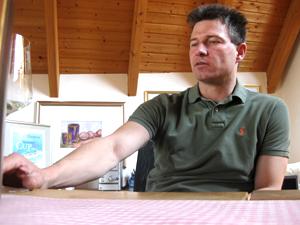 |
2009 Schäfer-Fröhlich Bockenauer Felseneck Auslese
If the Felseneck Spätlese felt a bit weighty on the palate – or at least uncharacteristically full, given the ultra-lean edges Tim usually prefers – the higher Prädikats (Auslese, BA, etc) in 2009 are stunning, and they usually do not wow me. I don’t why this is. The Auslese was harvested at about the same time as the Felseneck GG and though there is some botrytis here, there's not much. In fact, more prominent are simply dehydrated, or raisinated, grapes. This gives the wine a richness matched to an amazing purity, a fineness that is especially apparent in the presentation of mineral, of slate. Lime zest mixes it up with rich mango, melon, a textural palate that is quivering with electricity. Awesome length and concentration. This is very damn good.
2009 Schäfer-Fröhlich Bockenauer Felseneck BA
Harvested just after the Auslese, this is another wine that has very little botrytis, gaining its depth and concentration from raisinated grapes. This is simply spectacular and it may very well be one of the first Schäfer-Fröhlich BA's I’ll bring in since the 2005 (I’ll have to see the price – eeks!). This wine is incredibly dense, rich wild honey and lime, peach, apricot, mango. Here, Tim’s newfound elegance works for me perfectly, wow does this wine have style, perfect balance. This has to be the best BA he’s ever made.
Emrich-Schönleber is one of the top estates in Germany and while everyone in the U.S. puts Helmut Dönnhoff on the gilded pedestal, a sort of German wine God (I personally have been guilty of doing the same with Tim Fröhlich), there in the background is Emrich-Schönleber, father Werner and son Frank, toiling away and making wines that at the very least are nearly, if not actually, as good as both Dönnhoff and Schäfer-Fröhlich, and sometimes, much better.
In 2009, I personally think this is the top collection of the Nahe. Or rather, I should say that they made the wines that are most exciting to my palate. They do not have that blanketing, textural perfection of Dönnhoff, but they are the most severe, the most angular, the sharpest, purist, most defined and unapologetically mineral wines of the Nahe in 2009, and for me, well, that’s about as good as it gets. (Have no doubt, Tim Fröhlich made superb, superb wines, they are the most elegant of his career, but in my perverse mind I’ll take severity to elegance.)
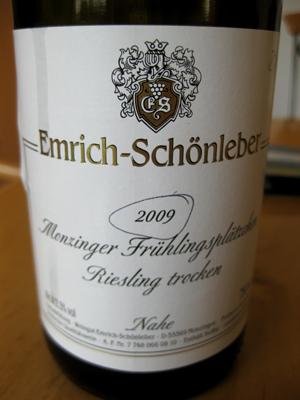 |
While the Grosses Gewachs are expensive, they are worth it in 2009 and I would love to see some buyers who collect Dönnhoff, Schäfer-Fröhlich and Keller without question, year in and year out, try the Grand Cru dries of Emrich-Schönleber. I can’t imagine you’ll be anything less than floored. That said, there are some tremendous values at Emrich-Schönleber, watch our email program for more on that… but now to the wines.
2009 QbA Trocken
A really damn good wine - wow. If the growing conditions of 2009 produced one thing, it was clean, fresh grapes that could be taken in with patience. I have the sense producers could focus on the selections of even the basic estate wines without worrying about the grapes still hanging on the vines. Perhaps there was a bit more attention to these lesser wines in 2009, because across the board (but especially at Emrich-Schönleber), I was blown away by the quality of the “lesser” wines. The simple Trocken here has great complexity, great clarity – it’s not going to teach you algebra or dangling participles, but it delivers wonderful floral perfumes, a slate and chalk minerality in such a unified, integrated manner that it appears to have the presence and class of a wine much more expensive. I’d be curious what people blind-tasted on this bottle would think. Very good.
2009 QbA Lenz
The Lenz is a smokier, meatier wine in 2009 than it has been in years past. Still, there is great clarity here (again – a refrain I’m afraid you’re going to here in most of these Schönleber tasting notes) with a shocking level of concentration. Good.
2009 QbA Mineral
As the wine suggests, this is a mouthful of minerals, mixing it up with a really fascinating spectrum of smoke, meat, salt, dried flowers and lemon pith. In other words, a simple recipe for perfection. This is lovely, lovely wine. The acidity here is glacially pure, shimmering and deep, there is a great play of sweet and sour, a “spiel” that is invigorating (and will be crazy food friendly - about 5-6 grams of residual sugar perfectly balanced by 8 grams acidity). This is one of those profoundly simple bottle that gets everything perfect – delicate, tip-toe balance, a compact concentration held firm by a great, uncompromising structure. I love this wine.
2009 Frühlingsplätzchen GG
This is an awesome bottle of wine and yes I do have a major bias for the Frühlingsplätzchen, so there you go. The Frühlingsplätzchen GG comes from an old-vine parcel and it shows in the unholy amount of concentration this wine smacks you with. This is, as I wrote spontaneously in my tasting book, “stupid good.” An astounding high-toned fruit that is nearly indiscernible from the notes of lavender, lime blossoms and mint. If that sounds good, it is. The palate is 54% evil with a penetration that will leave your tongue needing stitches, an edgy tactile quality that makes drinking this wine akin to rolling around in your mouth a cube made of razors (yet somehow the overall effect is invigorating, tantalizing). This is chiseled yet elegant, dense yet so, so fine. A great wine.
2009 Halenberg GG
This is the more obviously impressive of the two and a great wine in its own way. It is full and creamy, with more momentum and push behind it – this wine rolls over you, with style. Sweet textured fruits of impressive density are lifted by a lime-skin note, complicated by salt, dried flowers, a smoky note that has a touch of charcoal to it. Very good and perhaps the more “complete” wine, though for me the edginess of the Frühlingsplätzchen is just so compelling – at least at this early stage.
I was just over an hour late for my visit with Herr Dönnhoff – apparently there is an “Oberhausen” somewhere near Cologne and my GPS would just not recognize any such town in the Nahe. I’d driven quite a bit through the Nahe last year and felt like I could just “wing it,” so that’s what I did and after about a half-hour of going nowhere in particular, I had the idea to type into the GPS the town of Schlossbockelheim, confident that if I could find this village I could find Oberhausen. This worked, but the damage was already done. I was way late.
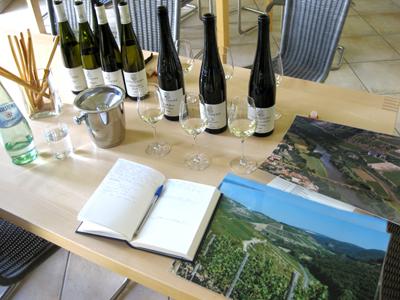 |
What is the point of this story? I have no idea. Maybe the point is that Helmut Dönnhoff is a gentleman because while I wouldn’t say he was pleased with my tardiness, he took me through a long and fascinating tasting and even warmed up a bit to me, charmed, no doubt, by my 8th grade level German and genuine interest in Bad Kreuznach.
While the basic-level dry wines were good enough – frankly, better than good in the way Dönnhoff has a hard time being anything less than well beyond good, they didn’t kill me, especially compared to the über-quality at Emrich-Schönleber. So I’ll just report on the Grosses Gewächs. While I thought the Krotenpfühl fell a bit short, the Leistenberg Kabinett is incredible – perhaps as good or even better than the 2007. The Spätlesen across the board are absolutely great to just very good, and I’d agree with others who say this is where Dönnhoff’s strength is. That said, the Hermannshöhle Auslese is one of the best I’ve had and the TBA is an utterly profound bottle of wine. I’m sure I’ll never, ever taste that wine again. So it goes. Above right: Tasting with the master always involves many bottles and a lot of maps and pictures. What can I say: I'm a map and pictures kind of guy.
2009 Dönnhoff Dellchen GG
A very nice wine, a sharp textured chalky lime nose is pungent, thick but crystalline and elegant. The palate is saturating, much more stylish than I normally think of Dellchen being – this is a fine GG. Please do not take the shortness of this note as any type of indicator of quality; this is very, very good.
2009 Dönnhoff “Felstürmchen” GG
This is the first year he’s using the “Felstürmchen” name on the bottling, as the wine comes from the heart of the vineyard – a section that normally shows a just incredible thrust and cut. This is more coiled up and dense, more compact… at the moment of my tasting, for whatever reason, it was fairly shut down. Lovely peach, apricot, but subdued. An excellent and stylish acidity.
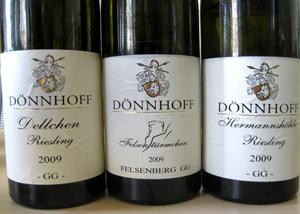 |
2009 Dönnhoff Hermannshöhle GG
A creamy, dense Hermannshöhle with an incredible integration of sweet, ripe fruit, peach, pear, apricot, nectarines, really a sort of mesmerizing complexity – a complex orchestration that is flawlessly put together. This is one of the most complete wines out there, just stupid elegant, absolutely Grand Cru. My best guess is this wine was also not showing terribly well, and it was still a simply stunning bottle. Wow.
2009 Dönnhoff Leistenberg Kabinett
I was underwhelmed by the Krotenpfühl Kabinett (and I have a predilection for impossible-to-pronounce vineyard names), but the Leistenberg Kabinett really made up for it. This is the best of what 2009 can be, amazingly fresh with a bountiful presentation of orchard fruits, white peach, apricot and green apple across the palate. Yet, even with this fullness the Leistenberg easily manages it, the wine dances across the palate with such ease, elegant and confident, lithe and expressive. Lovely, lovely concentration and good length. This might be as good as the 2007 Leistenberg Kabinett – maybe even better.
2009 Dönnhoff “Felstürmchen” Spätlese
After the profound 2007, the 2009 at this moment was a bit of a let down – still incredibly elegant but none of the raucous oh-my-god force of the 2007. Maybe it was just a bit shut down… will eagerly revisit.
2009 Dönnhoff Dellchen Spätlese (Auction?)
This may very well go to the Auction and perhaps it should, because it’s a damn spectacular bottle of wine. This, again, is one of the strengths of 2009: Relentless, juicy concentration of ripe citrus fruits that just plow over the palate. The key here (as with many of Dönnhoff’s Spätlesen) is not botrytis, but raisinated grapes that provide for blanketing, dense extract that is juicy, vibrant, electric. Awesome.
2009 Dönnhoff Brücke Spätlese
This is a wine that flirts with going over the edge but I don’t think it does – it is ripe though, the most muscular and brazen of the Spätlesen. It has nearly everything the Dellchen has, it just doesn’t handle it with the same elegance. Still, the Brücke isn’t about elegance or subtly – it’s about smacking you in the face with fine, fine Riesling. If it’s a wine that bulges at the mid-palate, the ripeness giving this a fat, fleshy frame, it’s still a wonderful wine that will drop many jaws and absolutely floor the more decadent among us.
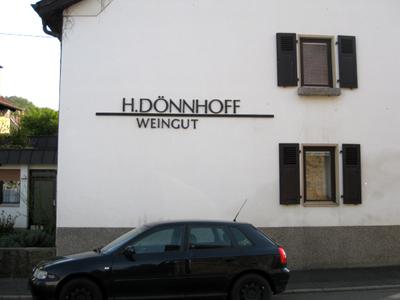 |
2009 Dönnhoff Hermannhöhle Spätlese
This is, as it always is, a little of everything and a lot of perfection. This is the most whole, the most perfectly undeniable wine, the most complete. It is luxurious, ripe and dense, awash in apricot, ripe peach, melon, even a dash a tangelo for sizzle, yet the curves are perfect – seducing, fleshy yet taut, with a super-fine thread of mineral and acidity that floats this wine without missing a step across the palate and on and on. This is another one of those wines that might be better in 2009 than in 2007, though who the hell knows. It’s still too early to tell, for sure, but it’s a superb Hermannshöhle.
2009 Dönnhoff Hermannhöhle Auslese
Every once and a while you should just be bold and carefree – a bit provocative and outlandish. So let me propose this: I think the 2009 Hermannshöhle Auslese is well beyond the 2007, so much purer, finer. The 2006, a completely different animal, is more dazzling, more complex, more Baroque and decadent (and probably the absolute best, if that’s possible to discern), but the 2009 is so pure it will make you weep. Fruit, from fresh to ripe, is all dazzling – green apple, pear, melon, ripe, luscious mango even pineapple perhaps, yet everything is inspired by citrus. There is a gentle tautness that brings everything, in perfect measure, into calm focus, perfect delineation. This is a masterpiece of an Auslese. Hell, it’s probably a BA – I was too dumbstruck to ask many questions. Absolutely stunning.
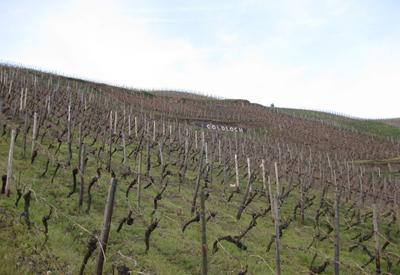 |
The grand old Diel estate has always been relevant, in a sort of grand old way. They have great vineyards, absolutely top quality, and they make top quality wines though they have always seemed to me to lack something… maybe it’s just the fact that this is the only estate of “the big four” that is not overly umlauted, or hyphenated, or both. In any event, the wines have rarely been for me truly exciting. Now, I don’t have deep experience here – I have tasted as widely as I could, but still this amounts to a handful of bottles from maybe 2002 to the present, so take my comments here with a pound and a half of salt.
I went last year to taste the 2008s not really expecting much and the wines were riveting – unique, complex, distinctive. They were some of the best dry wines I had tasted and I was shocked at how much I liked them – almost confused by the quality which I didn’t expect. When I was at a dinner at another estate a few days later, some hard-core German wine geeks (who actually live in Germany and know what they’re talking about) brought up the idea that Diel might have made the dry wine of the vintage. Above right: The Goldloch Vineyard.
Those sorts of grand proclamations are beyond the scope of this vintage report; suffice it to say the estate has a new sense of relevance, which I have to assume is a result of Caroline Diel, who has officially taken over the winemaking since 2006. The wines have become more defined – they still have a perplexing and complicated array of herbs and spices, a textured creaminess, a density married to a surprising tension, but they are more disciplined, more integrated.
 |
The 2008s were absolutely great; the 2009s may not be as good, or they may be better. Honestly, I’m not sure. Things are complicated – enjoy that.
2009 Diel Pittermannchen GG
A big wine, sizeable and textured, yet it’s awash with bright lemon-yellow fruit, rich peach and apricot married to herbal edges of sassafras and mint. This is a bulky wine, but it’s compelling, dense but not heavy with a fresh rush of acidity that pulls it all into form.
2009 Diel Goldloch GG
This feels like the warmest, ripest of the bunch, a waxy richness pervades the nose and palate, fuzzy peach and pear, even some pineapple and melon crowd the mid-palate, dense and saturating. The acids are ripe and provide a ballast for the heft of the palate, the overall impression balanced, if not exactly agile.
2009 Diel Burgberg GG
A marriage of the two and for sure the most compelling of the trio; this is a stately wine that is ripe and massive, yet very, very fine with peach, apricot and smoke aligned with a striking floral quality, a deep saline quality that is meaty and mineral at the same time. A powerful, muscular acidity lifts this wine with style and grace – damn fine. Wow.
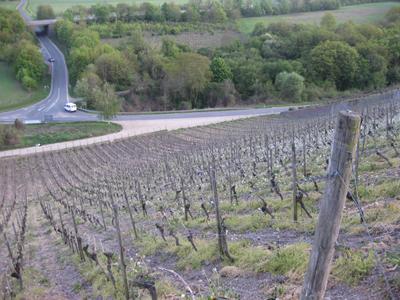 |
2009 Diel Pittermannchen Kabinett
This is a powerful, little, Kabinett – dense and saturating with a creaminess and very ripe aromas of apricot and melon, a dash of mango and lime zest provide a broad spectrum of fruit to twist your mouth and vocabulary. There is a minerality here that is fine, integrated into the density of the wine. This is a bruiser, have no doubt, but it carries itself very well and my best guess is this wine will develop very, very, very well… only time will tell.
2009 Diel Goldloch Kabinett
Rich, waxy, smoky, with a haze of ripe fruit across the mid-palate – ripe pear, peach and melon. For all this fullness, this polished creaminess, there is a zip of acidity, a distinct green apple zest that keeps it alive and fresh. Again, as with the Pittermannchen, my guess is this wine will develop very well.
Let’s not mince words: Klaus-Peter Keller and the wines he produces are absolutely worshipped. I can’t think of any other winemaker in Germany that is so intensely lionized – whose company, thoughts and words are so hungrily devoured by his frantic admirers.
There must be an official fan club somewhere, to say nothing of the dripping and hyperbolic accounts you read of Keller and his wines online, in countless wine forums and bulletin boards.
If any wine has been given a trillion points by someone, it has to be a Keller wine.
I’ll be honest and admit that I find this hero worship a bit uncomfortable, the same way the current vogue for David Foster Wallace seems a bit incongruous with the depth of his writings, the same way the recent impassioned controversy around Lebron James seemed to overwhelm the actual skills of the man himself.
I’ll admit at the same time that I’m hardly a neutral party in any of this: The more Keller wines I’ve tried, the more vintages I’ve been able to follow and watch develop, the more confident I am that Klaus-Peter is making simply the greatest dry Rieslings in Germany.
For a wine geek, such an admission is hardly an assumption. After all, the more popular something becomes, the easier it is to dismiss, as if raging popularity were the truest gauge of frivolity. In the high towers of the wine geek elite, discontent is beginning to brew, whispered assertions that Keller's wines are too big, too polished, "style over substance," or simply too perfect.
I think some of these arguments are ludicrous (too big?), but others have merit (too perfect) and in any case I find these discussions really very interesting and refreshing: I just have to say, for myself personally, I strongly disagree!
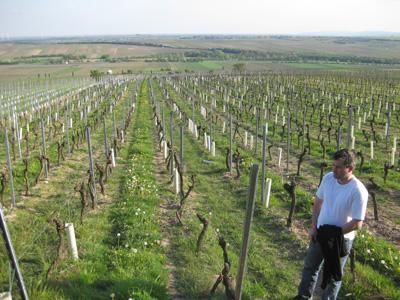 |
All this aside, celebrity, genius or not, Klaus-Peter Keller is an extraordinarily nice guy, truly warm, kind and funny without the slightest bit of pomp or arrogance. He’s also a bit crazy, as all great people really are in one way or another. He’s a dynamo, a whirling dervish of ideas, insight and wisdom mixed with a crazy, happy, billowing undeniable and irrefutable energy.
I remember driving through the Hubacker vineyard with him, bouncing around the truck (trying, as best I could, not to fly out the window or smash my head against the roof) while Klaus-Peter plowed on without hesitation or notice, speaking manically about (in no particular order) the superiority of asparagus grown on limestone as opposed to clay, the damn shame of so many small parcels within Florsheim-Dalsheim (so much potential), Riesling clones, Pinot Noir clones, vineyard management, Schloss Eltz and the greatness of Rauenthaler Baiken in the 70s, creating Pinot Noir with the transparency of Riesling, Burgundy (he loves Burgundy and has an impressive cellar of his own) and the promising pool of young talent in the Rheinhessen.
I don’t remember talking about Broadway musicals or combustion engines, but those are maybe the two subjects we missed. Suffice it to say, this guy has an active mind.
Under Klaus-Peter’s energetic leadership, Weingut Keller has, with an almost impossible rapidity, gained a massive international reputation. In 2002 the Keller estate was awarded the Vinitaly Award, a serious honor that has also graced wine world elites like Chateau Margaux, Vega Sicilia and Penfolds. Keller’s 2007 Abtserde GG was nominated “Dry Riesling of the Vintage” by the German wine review Gault Millau – in 2006 the estate won “Collection of the Year” and in 2000 Keller was nominated by the same publication as "Producer of the Year."
And you can’t engineer, in your most intensely vivid dreams, a blurb like this: “If I had to choose one wine to show how great dry German Riesling can be, I would show a Keller Riesling. Those wines are the German Montrachets.” But this is exactly what Jancis Robinson wrote, in the Financial Times no less.
For 2009, alas, I think Klaus-Peter Keller has assembled his greatest collection to date. The wines are absolutely monumental and the whole ironic part of all of this is that Keller is doing everything possible to do less.
Yes, there is a huge paradigm shift under way in Germany, a slow-dawning revelation that while ripeness is obviously still a goal, overripeness is growing problem. Klaus-Peter Keller, both because of his own intellectual/winemaking rigor and his very warm southern environs, is at the forefront of this watershed.
In 2009, Klaus-Peter Keller spent enormous time in the vineyard trying to dial down the vintage, to control and even retard the ripeness. “Canopy management” has to be a phrase of the vintage at Keller; whereas in 2008 Keller left about 8 leaves per bunch, in 2009 Keller cut it back to 5 or 6 leaves per vine. My rudimentary understanding is that this is done to slow down the physiology of the vine, of the grapes – the winemaking equivalent of gently putting on the brakes to bring everything to a perfect stop at the perfect moment (this would be poetically referred to as “balance”). Keller has also been experimenting with higher yields and selecting less, especially in riper vintages. Again, the goal is to average out the extremes – to give voice to all the expressions of the vineyard.
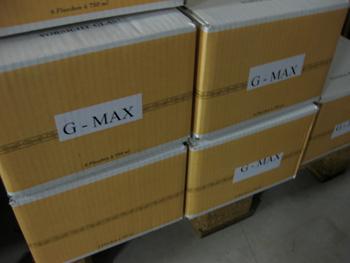 |
The risk here is that if you spend the season trying to slow down ripeness and nature hands you a mild vintage, you can come up short. To return to our brakes analogy, if you don’t have enough gas and you’ve applied the breaks too hard, you’re going to come to a full stop long before you’ve reached your destination. That’s a considerable risk. On the other hand, if you time it all right, you end up with marvelous, glossy, saturating ripeness that is nimble and fresh and bracing. (There is perhaps no greater expression of this control, than the 2009 Hubacker, which is restrained and delineated, with much more cut and purity than the 2008.)
(At left, a rare sighting: a stash of Keller's highly allocated G-Max. You won't often see this much G-Max in a single spot.)
This is what Klaus-Peter has achieved in 2009 – a level of fineness above and beyond all the rest, at least outside of the Saar Valley. And the Saar, for all its diminutive, mineral-inspired beauty, simply cannot match the power and statuesque form of Keller’s great dry Rieslings.
For those who know me, and who know the extremely high opinion I have of the 2008s (at Keller and across Germany), I’d probably say that Klaus-Peter is the one winemaker (again, at least outside of the Saar), who has outdone his 2008s… and in his case, he has greatly outdone them.
There is already a HUGE buzz regarding Keller’s 2009s and the legion of Keller only continues to grow. In Northern Europe Keller seems to be more popular than David Hasselhoff. To make matters worse, the 2009 vintage is short – we’ve seen our own allocations of even his basic wines cut down a bit. I expect demand for the 2009 Kellers to be painful, and bottles very, very scarce indeed. That said, they are worth seeking out.
2009 Keller Riesling Trocken
While the “Grand Cru” dry wines are undoubtedly the most majestic wines in the Keller stable, the “basic” dry wines in 2009 are absolutely beautiful – and that includes this entry Riesling. It does not have the gloss or the form, but it is pure as morning light and voraciously crisp. It’s a rustic wine, but I mean this not in a pejorative way at all, indeed a rustic wine can be (and in this case is) extraordinarily gripping, hanging on long after the graceful wine has made a more elegant retreat. This is a garden fresh Riesling with bright citrus, peach washing imperceptibly into lime and lemon, micro greens, an herbal detail of astounding diversity and range. The acidity is bright-white, limestone inflected and extraordinarily tense. Super.
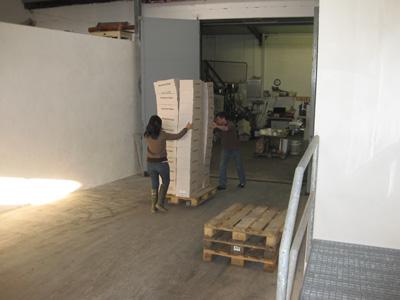 |
2009 Keller Riesling “Von der Fels”
An absolutely stunning bottle of wine – for the money there are few wines as serious, as concentrated and as graceful as this. This is probably the best “Von der Fels” I’ve ever tasted. It is a full wine, with all the ripeness of 2009 in evidence. The “Von der Fels” has energy, yet the mid-palate is rounded and glossy, ripe with waxy green apple skins, bright complex citrus fruits like grapefruit and orange giving the wine a spicy, perky quality and blending seamlessly into garden fresh notes of lime blossom and lilac. The minerality in this wine is forceful, as you’d except in a wine whose name translates to “from the rocks” – but it is also polished and pulled with great elegance long into the finish, tapering off in perfect proportion. An absolutely gorgeous bottle of Riesling.
2009 Keller Riesling Kirchspiel “RR”
Though this is by no means the best wine in the collection, I think it was my favorite. For me, at least at this showing, no other wine offered up such a diverse and fascinating expression of terroir. Where the “von der Fels” (not to mention the regular Kirchspiel GG) shows a bright white minerality, the Kirchspiel “RR” is dark and stony, black rock mixed with earth-bound flavors, subtle notes of tobacco and clay. As one might guess, the terroir in this wine is different – the “RR” is sourced from a red-soil parcel within the Kirchspiel. The vines are about 50 years old and Klaus-Peter fermented this with natural yeasts and let it reach its own “balance” – this wine has around 11 grams residual sugar, comfortably among the category of wines we can call “dry tasting.” The palate has all the density of the “von der Fels,” yet it is more delineated, more direct with a blazing citrus and great herbal complexity, mint soaring and intertwining with grapefruit. I love this wine. If I got this all right, this comes from a parcel that’s about a third of a hectare in size, about 1,500 bottles made. We’ll be the only one in the U.S., I think, with any of this. (Simply because, after tasting, I begged and whined until Klaus-Peter, taking pity on me, gave me some.)
2009 Keller Riesling Kirchspiel GG
Another glorious wine – the Kirchspiel is always among my favorites and the relative “steal” of the collection. It has the superb focus and clarity of the Absterde, though it is not as weighty. This wine presents an awesome spectrum of green apple, white peach, apricot, tangelo with subtle smoky tobacco notes. I actually found this to be a bit simpler than the Kirchspiel RR, though it is more forceful, more graceful.
2009 Keller Riesling Hubacker GG
The Hubacker is the Keller wine that is always my least favorite; it is the ripest, most luxurious of the wines and most often it just doesn’t have the lift and screaming clarity of the other wines. That said, if there’s a wine that flaunts the uncanny tension that Klaus-Peter has been able to put into his 2009 Rieslings, this is it – it is beautiful. This is far, far, far, far away my favorite Hubacker ever and a bottle I will try and get for my cellar (in previous years I've been more than content to skip it and go longer on the Kirchspiel). The ripe mango is present, the sweet-spicy push and pull of pineapple with citrus, yet the spine of this wine is big, a medley of stone with a core of muscular, ripe acids. A mind-twisting freak-show of a Riesling – great.
2009 Keller Riesling Absterde GG
The Absterde is a Riesling that needs its time. Even with a year or two in bottle the Absterde is often tense and turned in on itself, so early encounters with it are equally thrilling and painful. That said, the 2009 shows incredible promise, with a form that is so razor sharp, so absolutely needle-fine – this wine is lacy, satiny while having incredible rigidity, superb length. If you can find this, buy it, because if I were a betting man (which I'm really not) I would imagine this will be among the finest Absterdes Klaus-Peter has ever made.
